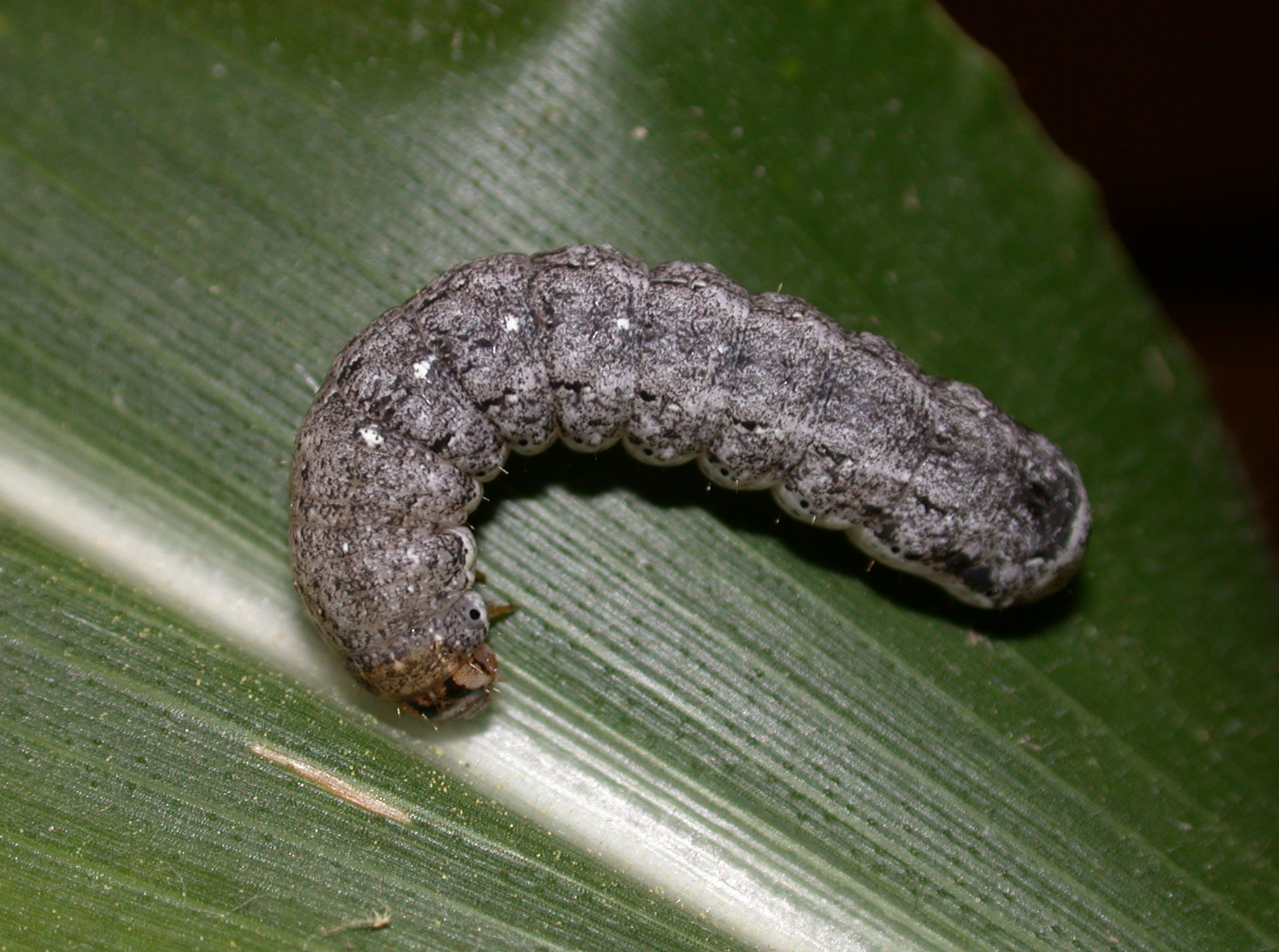Cutworms (Corn)
Multiple Species
Search the Pest & Crop Newsletter
Appearance and Life History
Cutworms can attack crops virtually anywhere in the Midwest. Often an infested field will have a mixed population of several species of cutworms, causing varying degrees of damage.
The bodies of cutworms are cylindrical and may vary in length from 1/8 to 1-1/2 inches (3.2 to 38.1 mm), depending on the species. Cutworms may lack any visible markings or may be distinctly marked with spots or stripes. Color may range from black, gray, and brown to nearly white or translucent.
Most cutworms overwinter as pupae in the soil or as young larvae. After mating, moths deposit eggs on soil, weeds, and/or cultivated plants, if present. Feeding begins in the spring.
Larvae hatch in 2 days to 2 weeks, molt several times and mature in 2 weeks to 5 months. Most cutworms have one generation per year, while some species have 2 to 4.

Photo by J. Obermeyer
Damage
Early cutworm feeding may include holes chewed in leaves. Leaf margins may appear ragged. Older larger worms often cut plants at or below ground level.
Corn Insect Control Recommendations: E-series 219-W (PDF)
Sampling Method
- Examine the top several inches of soil or under plant residues around damaged plants.
- To monitor for cutworm damage, walk fields as plants emerge.
- Randomly check 20 plants in each of 5 areas of a field (100 total plants).
- Record the number of cut or damaged plants for each area and the field as a whole. Make a note of leaf feeding that may be due to young cutworms.
- Record the average number of fully unrolled leaves for the field. Check fields again in 24 to 48 hours. Be sure to monitor those areas of the field where cutworms are most likely to be found (wet, weedy areas).
- Management Guidelines

Photo by J. Obermeyer
No management guidelines have been established for cutworms other than black cutworm in corn.


